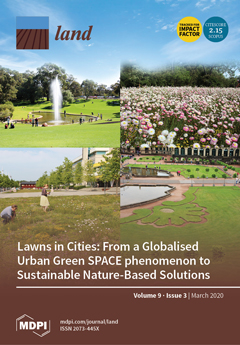Resource information
This opinion paper discusses urban lawns, the most common part of open green spaces and urban green infrastructures. It highlights both the ecosystem services and also disservices provided by urban lawns based on the authors’ experience of working within interdisciplinary research projects on lawns in different cities of Europe (Germany, Sweden and Russia), New Zealand (Christchurch), USA (Syracuse, NY) and Australia (Perth). It complements this experience with a detailed literature review based on the most recent studies of different biophysical, social, planning and design aspects of lawns. We also used an international workshop as an important part of the research methodology. We argue that although lawns of Europe and the United States of America are now relatively well studied, other parts of the world still underestimate the importance of researching lawns as a complex ecological and social phenomenon. One of the core objectives of this paper is to share a paradigm of nature-based solutions in the context of lawns, which can be an important step towards finding resilient sustainable alternatives for urban green spaces in the time of growing urbanisation, increased urban land use competition, various user demands and related societal challenges of the urban environment. We hypothesise that these solutions may be found in urban ecosystems and various local native plant communities that are rich in species and able to withstand harsh conditions such as heavy trampling and droughts. To support the theoretical hypothesis of the relevance of nature-based solutions for lawns we also suggest and discuss the concept of two natures—different approaches to the vision of urban nature, including the understanding and appreciation of lawns. This will help to increase the awareness of existing local ecological approaches as well as an importance of introducing innovative landscape architecture practices. This article suggests that there is a potential for future transdisciplinary international research that might aid our understanding of lawns in different climatic and socio-cultural conditions as well as develop locally adapted (to environmental conditions, social needs and management policies) and accepted nature-based solutions.


